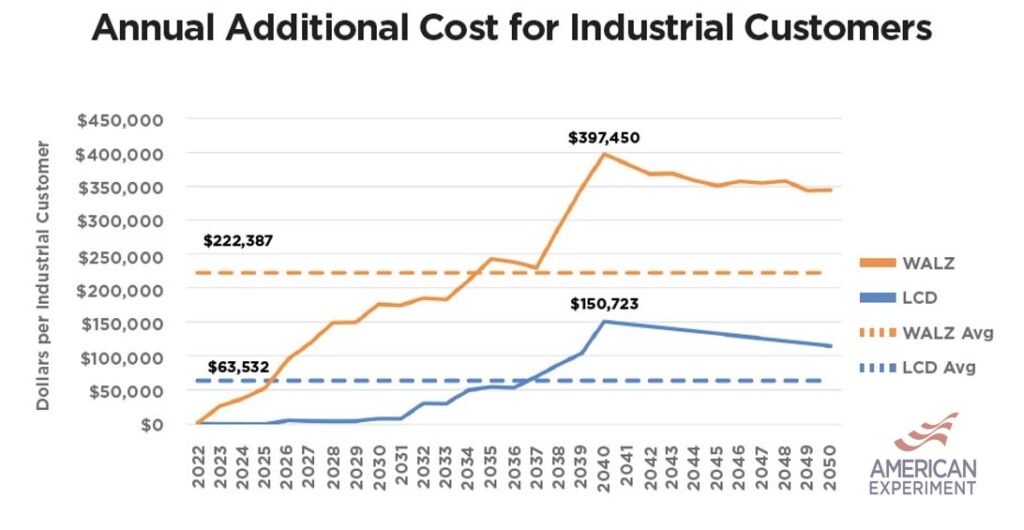Walz’s 100 percent carbon-free energy plan will increase electricity costs for industrial customers and manufacturers
In earlier installments of this series, we discussed how the Walz Proposal would increase electric bills for Minnesota businesses by an average of $9,900 per year. In this installment, we will discuss how the average industrial customer would pay an additional $222,000 per year.
Click here to view other installments in the series.
Rising prices for industrial customers
Minnesota’s industrial electricity consumers use enormous quantities of electricity. U.S. Energy Information Administration data show the state’s 5,139 industrial customers used 34 percent of the state’s electricity. That means these 5,139 firms used more electricity than the roughly 2.1 million residential customers in the state.
These firms would see their prices increase by an average of $222,387 per year compared to operating the current electricity grid. Prices would peak in 2040, with the additional costs to industrial customers reaching nearly $400,000.

With electricity prices skyrocketing, it will be much more difficult for manufacturing firms to stay in business in Minnesota. We have already seen firms like Verso Paper and Gerdau Steel shut down or scale back their Minnesota operations due in part to the rising cost of electricity.
This is a major problem for the state’s economy because manufacturing is a staple of Minnesota’s economy. Manufacturing jobs are good, family-supporting jobs. According to the National Manufacturers Association, manufacturing accounted for $52 billion in the state’s economy in 2019, accounting for 13.6 percent of total GDP. Minnesota manufacturers employed 310,000 people in 2020, with average annual compensation of $80,900 in 2019.
The high wages paid in the manufacturing sector are why each job in manufacturing
supports 1.9 indirect and induced jobs (the “multiplier effect”) in other sectors of the
economy, bringing the total employment impact of manufacturing to more than one
million jobs. Because manufacturing has a high multiplier effect, a factory closing in
Greater Minnesota has a large, negative ripple effect throughout entire communities.
If we want a strong economy, we need low energy costs to power our homes, businesses, and industries. Rising energy prices drive economic activity and the jobs that accompany it to other states or nations.